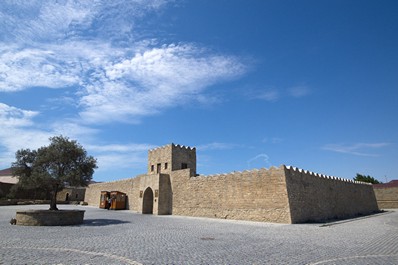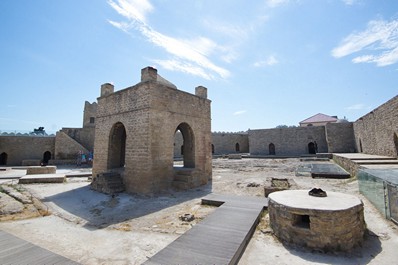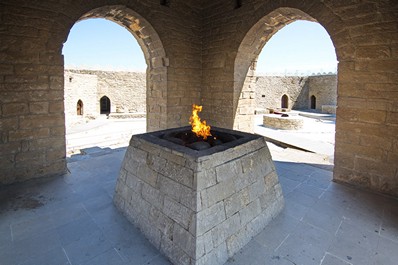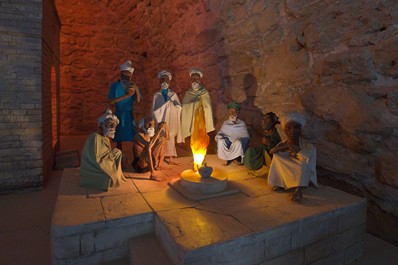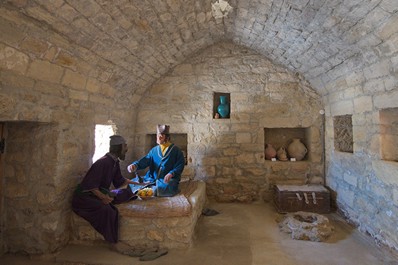Ateshgah Temple near Baku
The Ancient Zoroastrian Temple Ateshgah - "Fire Temple"
The Temple of Eternal Fire - Ateshgah - is an authentic Azerbaijani exotic. It is well-known practically all over the world. It is located 30 km from the center of Baku in the suburb of Surakhany. This territory is known for such unique natural phenomenon as burning natural gas outlets (underground gas coming onto surface contacts oxygen and lights up). The temple in its present state was constructed in the 17th-18th centuries and built by the Baku-based Hindu community related to Sikhs.
However, the history of the Temple is even longer. From immemorial times this was the holy place of Zoroastrians- fire worshippers (approximately beginning of our era). They attributed mystical significance to the inextinguishable fire and came there to worship the relic.
After the introduction of Islam, the Zoroastrian temple was destroyed. Many Zoroastrians left to India and continued their worship there. However, in the 15th -17th centuries the Hindus-fire worshippers, who came to Absheron with trading caravans, began to make pilgrimages to Surakhany. The Indian merchants started to the built temple, and the earliest part is dated from 1713. The latest part, the central temple-altar, was built with the support of merchant Kanchangar in 1810. During the 18th century, chapels, cells and a caravanserai were added to the central part of the temple. The temple even has carved inscriptions in Indian lettering.
In the early 19th century the Temple acquired its present-day appearance. Ateshgah is a pentagonal structure with a castellation and entrance portal. In the center of the yard, at the altar-sanctuary executed in the form of a stone bower, is a famous well, from which beat the “eternally” burning gas. From the angles of the center, more towers are located, surrounded by a yard with cells.
Above the entrance portal is a traditional guest room or "balakhane". Near the temple, there is a big pit where they used to burn the bodies of dead Hindus in the sacred fire.
In the mid-19th century due to the movement of the surface the natural gas yield ceased. Pilgrims interpreted it as the punishment from the gods and left. Ateshgah as a place of worship existed until 1880. Today this ancient Zoroastrian temple has been opened for tourists attracting them with artificial fires.


